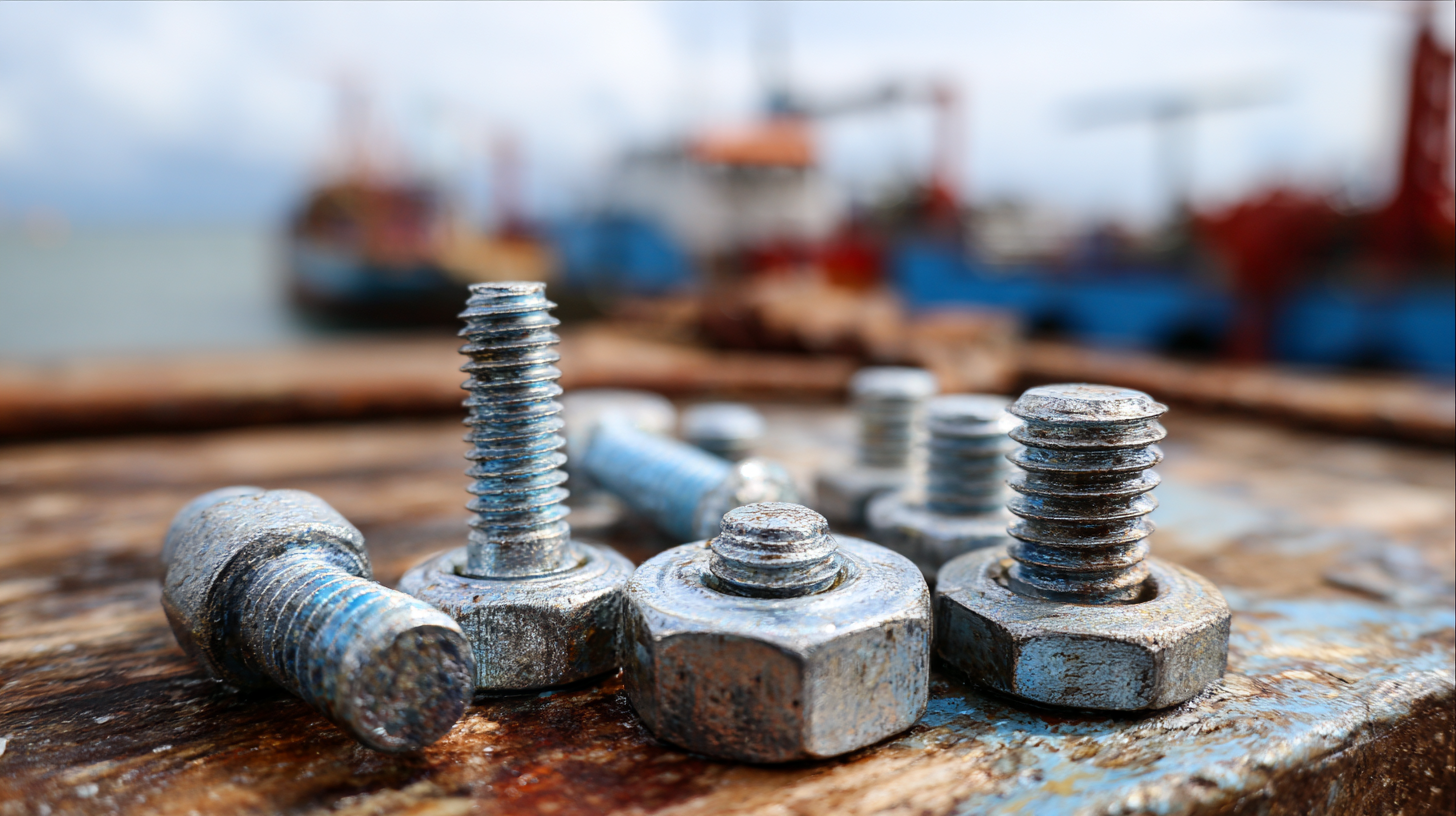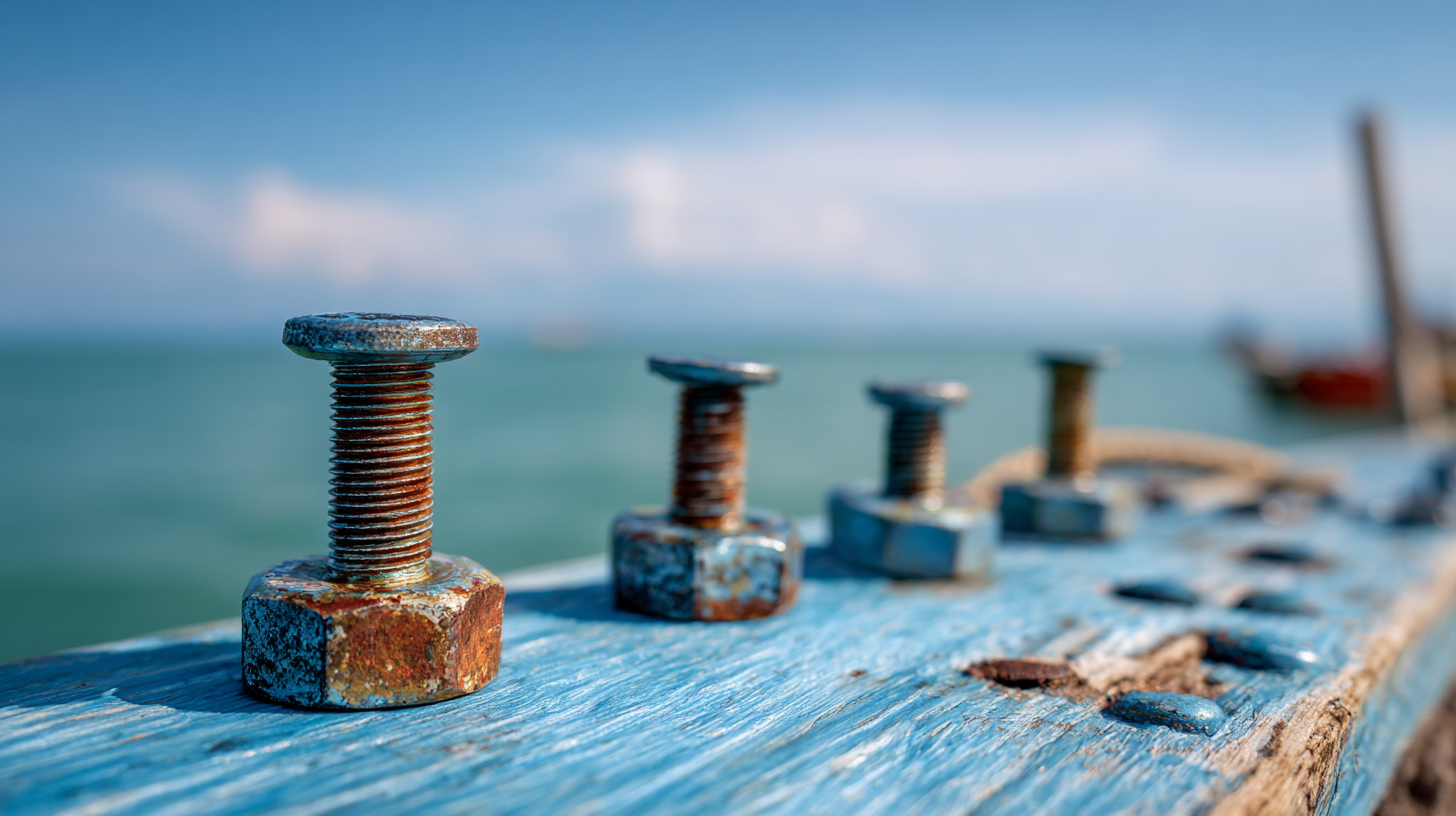Inquiry
Form loading...
When it comes to marine applications, the reliability of equipment is paramount, and at the heart of this reliability lies the use of high-quality marine fasteners. However, using marine fasteners in harsh environments presents unique challenges that can compromise their effectiveness. From corrosive saltwater and extreme temperatures to constant vibration and mechanical stress, these fasteners must endure conditions that would quickly degrade standard hardware. In this blog, we will explore common issues faced when selecting and installing marine fasteners in hostile settings, offering insights on how to navigate these challenges. By understanding the specific demands of marine environments and the characteristics of suitable fasteners, you can ensure the longevity and safety of your marine applications. Join us as we delve into practical tips and solutions for optimizing the performance of marine fasteners in these demanding conditions.

In the challenging marine environment, fasteners are subject to various environmental issues that can significantly affect their performance and longevity. Factors such as saltwater corrosion, extreme temperatures, and biofouling are common culprits that lead to fastener failure. For instance, marine fasteners made from metal are particularly susceptible to rust and degradation due to prolonged exposure to seawater. This is especially critical in applications involving ocean exploration, where reliability is vital for the integrity of equipment.
Recent advancements in marine hardware standards, like the new ocean exploration hardware standard, aim to address these issues by promoting the use of durable materials and innovative designs. This development is essential, particularly as industries increasingly turn towards sustainable practices in harsh environments. Additionally, with rising concerns about environmental contamination, as noted in recent reports about military bases, ensuring that marine fasteners can withstand challenging conditions is crucial for protecting marine ecosystems. Adopting advanced engineering solutions will help mitigate these environmental challenges, and enhance the overall performance of fasteners in marine applications.
When selecting marine fasteners for harsh saltwater environments, understanding material longevity and corrosion resistance is crucial. According to a report from the Marine Fasteners Association, approximately 60% of marine hardware failures are attributed to inadequate corrosion resistance. To mitigate this risk, consider fasteners made from stainless steel grades such as 316, which are specifically designed to endure intense saltwater conditions. This stainless steel variant boasts a higher nickel content, enhancing its resistance to pitting and crevice corrosion, making it a top choice for boat manufacturers worldwide.

Additionally, look for fasteners that have undergone suitable surface treatments. An industry study revealed that hot-dip galvanization could double the lifespan of fasteners in marine applications. Coatings like Teflon or epoxy also provide an extra layer of protection, increasing durability against harsh marine environments. When choosing fasteners, always check compliance with relevant marine standards such as ASTM B117, which addresses salt spray testing, ensuring that the chosen fasteners will maintain integrity and functionality in the long run.
When selecting marine fasteners for harsh environments, the choice of materials is crucial for ensuring durability and performance. Three key materials to consider are stainless steel, titanium, and plastic composites. According to a report by the American Society of Mechanical Engineers (ASME), stainless steel fasteners, especially those of the 316 type, are highly resistant to corrosion in marine conditions, making them a popular choice for boat builders. They retain their strength in high salinity and humid environments, effectively managing issues like pitting and crevice corrosion.
Titanium fasteners have gained traction in the marine industry due to their incredible strength-to-weight ratio and superior corrosion resistance. A study from the Journal of Materials Research found that titanium can outperform stainless steel in aggressive marine conditions, particularly in applications exposed to saltwater. This characteristic is particularly valuable for high-performance vessels where weight savings are critical. However, the cost remains a significant factor, as titanium fasteners can be up to five times more expensive than stainless steel counterparts.
Lastly, plastic composites present a lightweight and corrosion-resistant option for certain applications. Market research indicates that the use of advanced polymer materials can significantly reduce the weight of marine fasteners while maintaining structural integrity. These composites are ideal for non-load-bearing applications and represent a growing trend in the industry as manufacturers seek innovative solutions to combat the challenges posed by harsh marine environments.
| Material | Corrosion Resistance | Tensile Strength | Cost | Weight |
|---|---|---|---|---|
| 316 Stainless Steel | Excellent | High | Medium | Moderate |
| Titanium | Excellent | Very High | High | Light |
| Aluminum Alloy | Good | Moderate | Low | Very Light |
When it comes to marine fasteners, maintaining their integrity in harsh environments is crucial for ensuring safety and longevity. Here are four maintenance tips to help extend the life of these essential components.
First, regular inspection is key. Check for signs of corrosion, wear, or loosening, especially after exposure to salty water or extreme weather. Promptly replacing damaged fasteners can prevent more extensive issues down the line.
Second, applying a protective coating can significantly enhance longevity. Specialized marine-grade coatings provide a barrier against moisture and salt, reducing the risk of rust and deterioration.
Additionally, ensure that fasteners are properly tightened according to manufacturer specifications. Over-tightening can lead to material fatigue, while loose fasteners can be prone to failure.
Lastly, consider using dissimilar metals with caution; galvanic corrosion can occur when different metals come into contact in a marine environment. Employing isolation methods, like rubber washers, can mitigate this risk.
By following these tips, you can significantly improve the durability and performance of your marine fasteners.
In marine environments, fasteners face a relentless battle against corrosion, which can significantly compromise their integrity. Recognizing the signs of corrosion early is crucial to ensure safety and prolong the lifespan of marine equipment. Key indicators include visible rust, pitting, flaking, and discoloration, which signal that the fasteners are losing their protective properties. According to a report by the National Association of Corrosion Engineers, corrosion-related failures in marine settings can lead to costs exceeding $1 billion annually. This emphasizes the importance of regular inspections.

When evaluating fasteners for potential replacement, look for these critical signs. If the fastener has extensive rust or pitting that affects its structural integrity, it’s time to replace it. Additionally, if you notice any flexibility when applying torque, this may indicate metal fatigue, a leading cause of failure in marine applications.
Tip: Always choose marine-grade fasteners made from materials such as stainless steel or titanium, which are designed to withstand harsh saline conditions. Regular maintenance checks can save time and resources, ensuring that your marine projects remain safe and effective. Implementing a systematic inspection routine every six months can help catch issues before they escalate.
